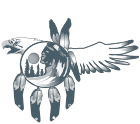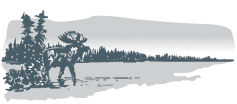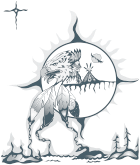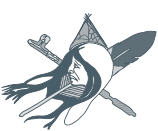
About Us
Timeline
p RX WL;y
2.6 million years ago
Pimachiowin Aki is carved in the last ice age when moving glaciers scrape the surface and leave behind the boreal shield
7,000 years ago
Anishinaabeg practise Ji-ganawendamang Gidakiiminaan (Keeping the Land) as they hunt, gather and fish across Pimachiowin Aki and adjacent landscapes
1875
Treaty 5 is signed by Queen Victoria and Indigenous peoples living around Lake Winnipeg, including the Anishinaabeg of Pimachiowin Aki. The Treaty defines ongoing rights and obligations of the First Nations and the Government of Canada
1982
Treaty and Aboriginal rights are recognized and affirmed in Section 35 of the Constitution Act, 1982. They are a key part of the United Nations Declaration on the Rights of Indigenous Peoples, which the Government of Canada has committed to adopt
1983
Woodland Caribou Park is established in Ontario
1985
Atikaki Park is established in Manitoba
2002
Four Anishinaabe First Nations sign an accord to protect their culture and ancestral lands. The accord is the first step toward becoming a World Heritage site.
2004
The Government of Canada adds Pimachiowin Aki to its shortlist of 10 potential UNESCO sites after a review of 125 potential sites across Canada
2006
The governments of Manitoba and Ontario join the First Nations to form Pimachiowin Aki Corporation. Together, the partners work to have Pimachiowin Aki designated a World Heritage site
2007
The Woodland Caribou Provincial Park Management Plan sets out how the park will be protected and how it can be used in the future
2008
An Atikaki Provincial Park Management Plan sets out how the park will be protected and how it can be used in the future
2011
After a decade of research and community engagement, each First Nation completes a land management plan that sets out how their ancestral lands will be protected and how it can be used in the future
2012
On behalf of Pimachiowin Aki Corporation, the Government of Canada submits the World Heritage site nomination bid to UNESCO
2013
Pimachiowin Aki becomes a catalyst for change – UNESCO asks for more information in order to properly evaluate the nomination. At the same time, UNESCO rethinks its method of evaluating Indigenous mixed nominations, where land and culture are interrelated
2016
Pimachiowin Aki places its updated World Heritage site nomination bid on hold after Pikangikum First Nation—one of the original partners—withdraws from the project
2017
Pimachiowin Aki submits a new World Heritage site nomination bid to UNESCO
2018
Pimachiowin Aki becomes a UNESCO World Heritage site




